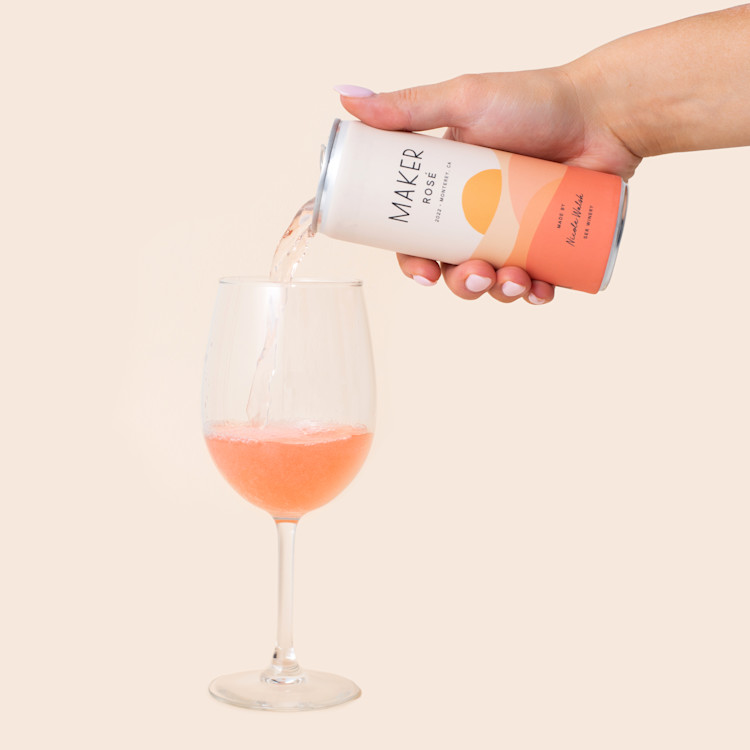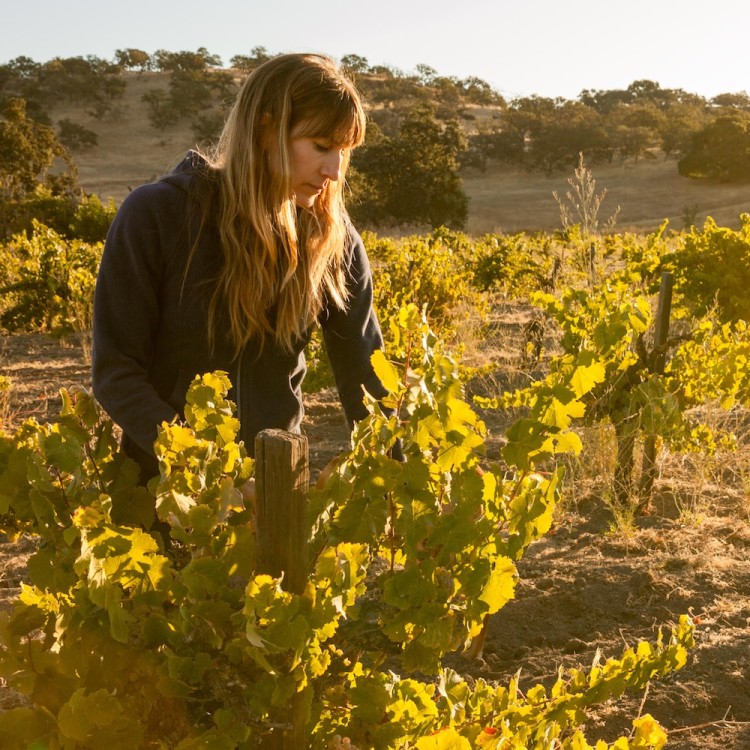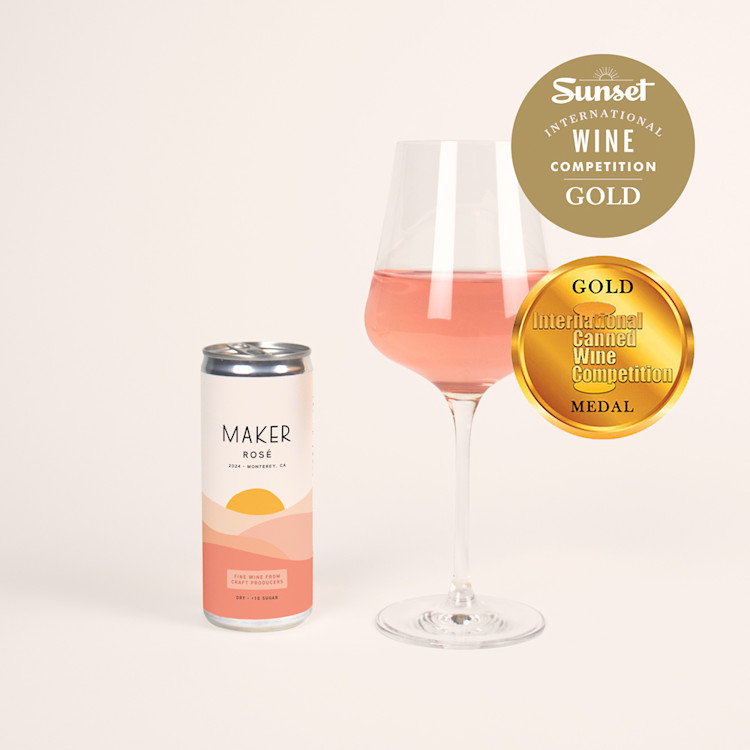Wine School
Wine 101: All All About Grenache
A deep dive into Grenache: where it’s from, what it tastes like, and why winemakers (and wine drinkers) can’t get enough of it.

By Maker Wine
September 18, 2025

What is Grenache, really?
Grenache is one of the most widely planted grapes in the world — and one of the most underappreciated. Known as Garnacha in its native Spain and Cannonau in parts of Italy, Grenache is the unsung hero behind a wide range of wines: bold reds, age-worthy blends, and some of the most expressive, dry rosés out there.
Even if you haven’t heard of it, chances are you’ve tasted it. Grenache is a quiet workhorse — versatile, adaptable, and a favorite among winemakers for how well it plays with others (and occasionally steals the show on its own).
Let’s dig into what makes this grape worth knowing.
Shop Rosé of Grenache
Rosé Wine
Ser Winery, Monterey, CA
Rhubarb, guava, strawberries-and-cream - a very special single-vineyard Rosé of Grenache.
Where It All Started
Grenache likely originated in Aragon, in northeastern Spain, where it’s still known as Garnacha. From there, it spread across the Mediterranean and took root in Southern France, parts of Italy, and eventually to New World wine regions like Australia and California. The grape thrives in warm, dry climates with well-drained soils, and it has a particular knack for reflecting the character of the place it’s grown.
Though often used in blends, especially in the Southern Rhône, Grenache has real depth on its own. When grown with intention — think old vines, limited yields, and thoughtful farming — it can produce wines that are both plush and structured, often with surprising complexity and the ability to age.
Grenache Around the World
In Spain, Garnacha is planted widely in regions like Calatayud and Priorat. The wines here tend to be bold, ripe, and intense — think black cherry, licorice, and sometimes a note of ruby grapefruit. In Priorat, where old vines cling to steep, slate-covered hillsides, Garnacha can take on a dense, almost liqueur-like quality, reminiscent of Amarone with its figgy, dark-spiced depth.
In France, Grenache is the backbone of many Southern Rhône blends. It’s the G in GSM: Grenache, Syrah, Mourvèdre. In these wines, Grenache brings body, red fruit, and savory undertones — like dried herbs, tobacco, and lavender. You’ll also find it in Châteauneuf-du-Pape, where it helps create some of the region’s most celebrated and cellar-worthy reds.
California offers a different lens. In coastal regions like Monterey County or parts of Sonoma, Grenache expresses a lighter, more lifted style — wild strawberries, citrus peel, floral aromatics, and a fresh, energetic structure. These wines often have a brightness that makes them especially suited to chillable reds or as the base for dry, textured rosé.
Why Winemakers Love Working With Grenache
Grenache is beloved by winemakers because it’s adaptable, expressive, and naturally generous with fruit. Depending on where it’s grown and how it’s vinified, it can taste wildly different. Still, it always brings energy and charm. Grenache is famously generous in the vineyard. It produces full clusters, ripens late, and offers up plenty of color, aroma, and fruit when handled with care. But it’s not without its challenges — it’s prone to oxidation and needs the right site and thoughtful winemaking to really sing.
That said, when it’s dialed in, Grenache delivers. As a blending grape, it adds texture and fruit without overwhelming a wine’s balance. As a varietal, it’s versatile and expressive — fruity, spicy, and approachable, with relatively low tannins and a natural softness on the palate.
In rosé, Grenache’s lower pigment levels and delicate phenolics mean it’s practically built for direct-press winemaking. The result is a pale, dry wine with red berry aromatics and a subtle herbal edge — clean, refreshing, and quietly complex.
Why A Grenache Rosé?
At Maker, we’ve worked with Grenache in rosé form through our collaboration with Nicole Walsh of Ser Winery, based in Santa Cruz. Nicole sources her Grenache from Sweetwater Vineyard in Monterey County, a cool-climate site that allows for slow, even ripening — perfect for retaining freshness and acidity.

Nicole Walsh uses biodynamic and organic farming practices at her winery, Ser
She made this wine using a direct press approach: the grapes are gently pressed right after harvest to capture just a blush of color and texture, without any extended skin contact. Nicole then fermented and aged the wine in stainless steel to preserve its aromatics. The result is dry, aromatic, and layered — with notes of rhubarb, guava, and strawberries-and-cream, plus a faint saline snap on the finish. No sugar, just structure and a lovely fruit-forward sipping experience.
Nicole describes it as "what pink might taste like." The critics agreed: Rosé of Grenache has won SIX gold medals in wine competitions (and counting!) and been rated 93 points by both Sunset International Wine Competition and Sommeliers' Choice Awards.
Shop Rosé of Grenache
Rosé Wine
Ser Winery, Monterey, CA
Rhubarb, guava, strawberries-and-cream - a very special single-vineyard Rosé of Grenache.
Grenache is generally best consumed young (unless made in a concentrated style or fortified, like some vin doux versions). In rosé form, however, its freshness is exactly what we’re after, and cans are the ideal method of preserving that bright delicacy. While most people associate Grenache with big, bold red blends, we love it as rosé, because this style shows off the grape’s elegance and versatility in a refreshing (and yummy!) way. Curious about rosé? Read all about this versatile style in our guide to rosé wine.
Celebrating Grenache on Its Own Day: A Toast to the Quiet Overachiever
Every third Friday in September, the wine world takes a moment to celebrate International Grenache Day — a nod to a grape that doesn’t always get top billing, but quietly holds up some of the world’s best-loved wines.
Grenache isn’t the flashiest grape out there — but that’s kind of the point. It doesn’t chase trends or headlines. It just shows up, vintage after vintage, delivering balance, drinkability, and character in whatever form it's asked to take.
So on International Grenache Day, we’re raising a can to this quiet powerhouse. And if you haven’t tried Grenache in rosé form yet… well, we know a really good one.




